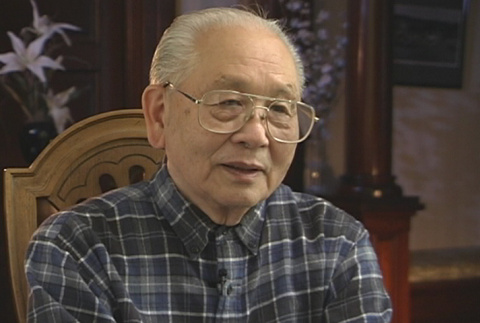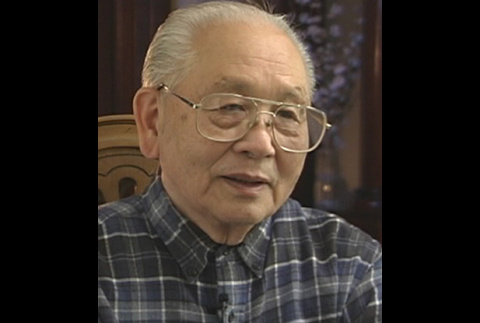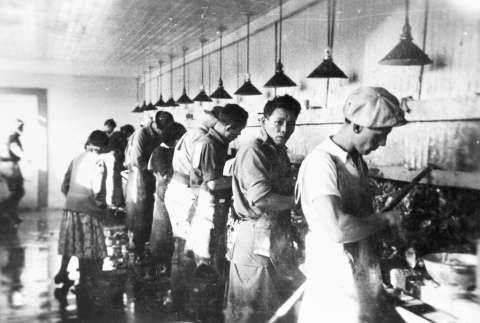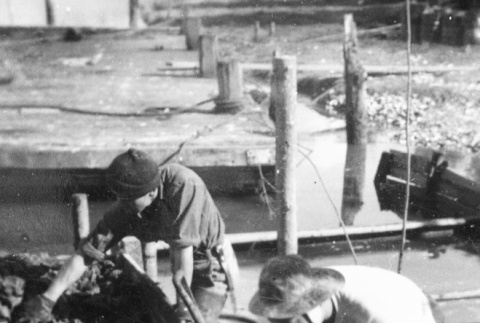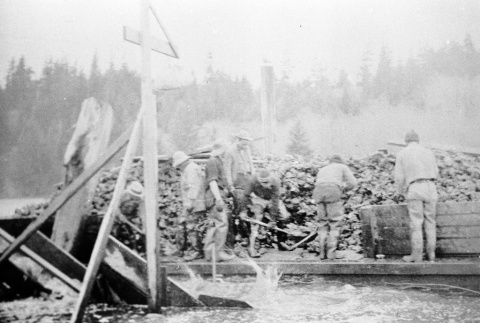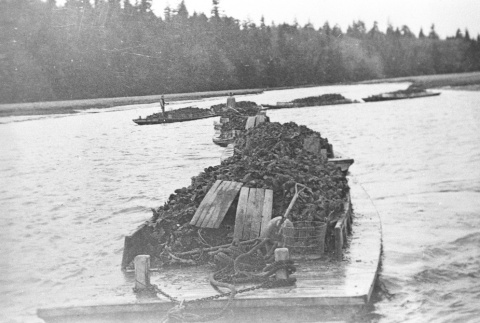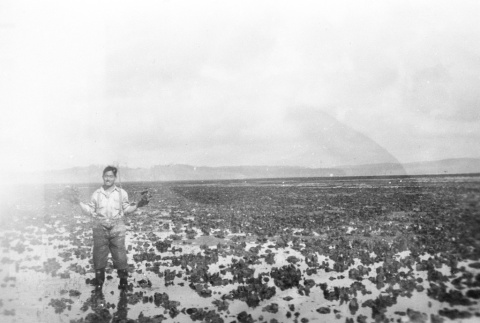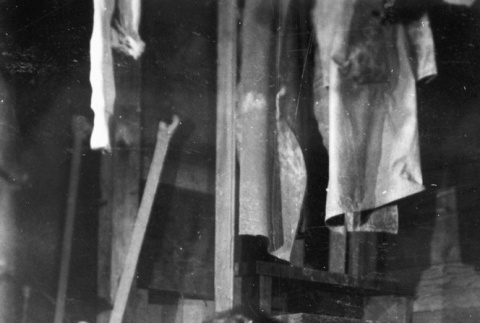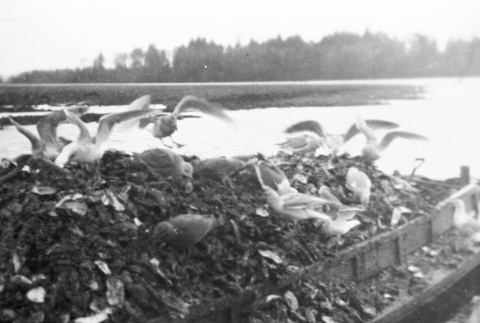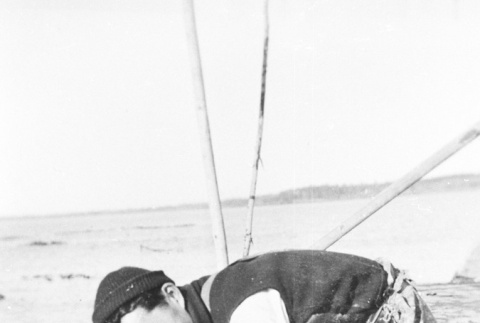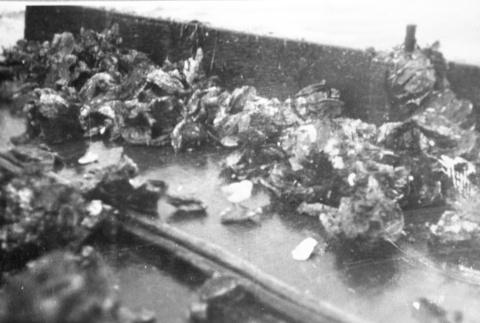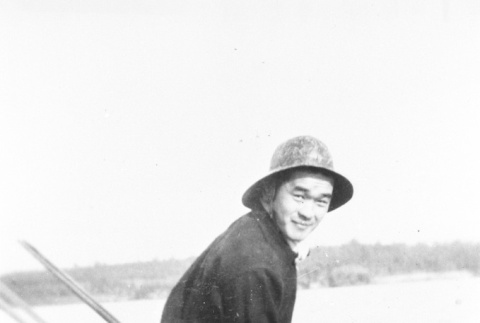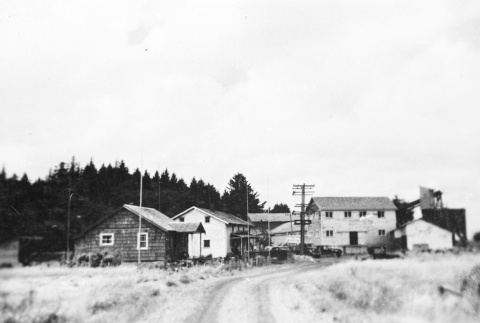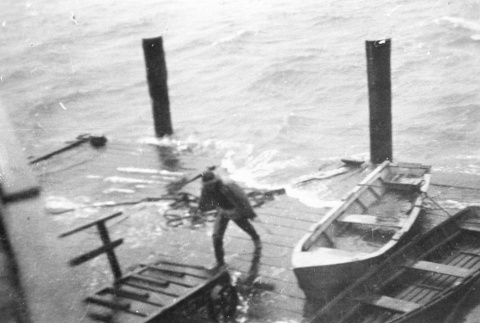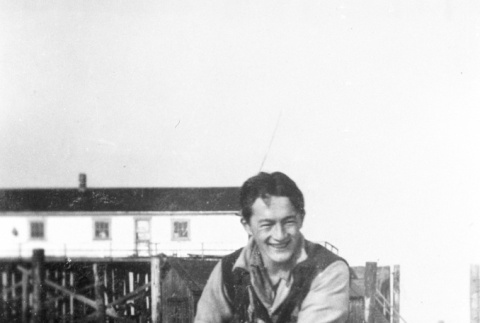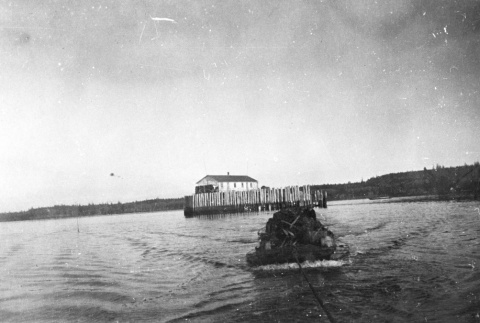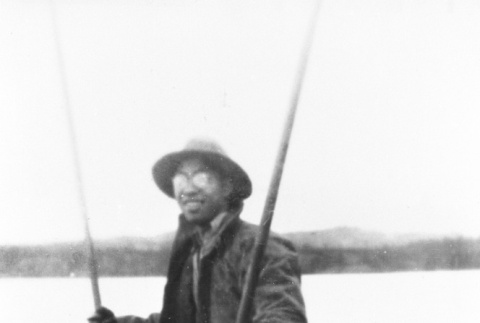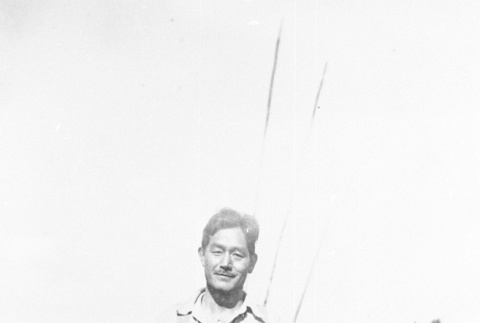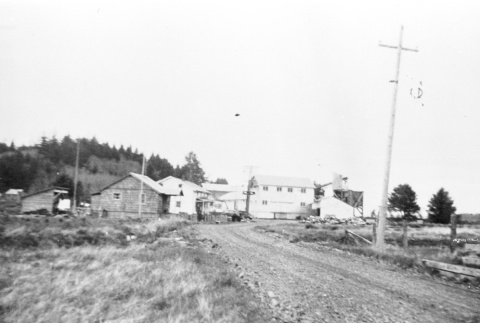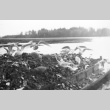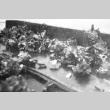20 items
20 items
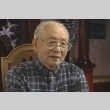
vh
Richard Murakami Interview (ddr-densho-1000-64)
Nisei male. Born 1914 in Nemah, Washington. His family owned and operated Eagle Oyster Packing Company in Nahcotta, Washington. Incarcerated at the Tule Lake concentration camp, California. Returned to Nemah following the war, where his family had to fight to get the company back. Eventually, sold the business to Coast Oyster Company and stayed on as …

Narrator Richard Murakami
Nisei male. Born June 18, 1914, in Nemah, Washington. His family owned and operated Eagle Oyster Packing Company in Nahcotta, Washington. Incarcerated at the Tule Lake concentration camp, California. Returned to Nemah following the war, where his family had to fight to get the company back. Eventually, sold the business to Coast Oyster Company and stayed …
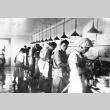
img
Shucking oysters (ddr-densho-15-93)
These Japanese Americans are shucking oysters on a table. Unshelled oysters were stored behind the wall shown here. The workers grabbed the oysters through an opening in the wall, opened them, placed the oysters in buckets, then deposited the shells on a conveyor belt below the worktable. Shuckers were paid by the bucket.
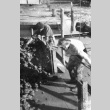
img
Unloading oysters from a bateau (ddr-densho-15-105)
These two farmers are unloading oysters from a bateau for processing. Left to right: Chuck (last name unknown) and Jack Tanabe.
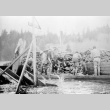
img
Unloading oysters from a bateau (ddr-densho-15-107)
These workers are unloading oysters from a bateau at the processing area. The oysters were shoveled into a hopper and onto a conveyor belt that led into the processing area, where they were opened.
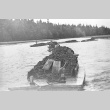
img
Oyster bateaux (ddr-densho-15-106)
The seven oyster bateaux shown here are about to be towed to the processing area.
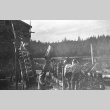
img
Unloading oysters from a bateau (ddr-densho-15-108)
These workers are unloading oysters from a bateau at the processing area. The oysters were shoveled into a hopper and onto a conveyor belt (left side of image) that led into the processing area, where they were opened.
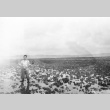
img
Farmer standing on an oyster bed at low tide (ddr-densho-15-103)
Mr. Okazaki stands on an oyster bed at low tide.
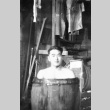
img
Oyster farmer taking a bath (ddr-densho-15-95)
Norio Mitsuoka taking a bath. The water supply was limited, and workers had to depend on rainwater, which was collected in vats (behind the barrel), for bathwater.
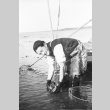
img
Oyster farmer (ddr-densho-15-97)
"Turk" Fujiya picking oysters at low tide. A bateau, or small barge, that carried the oysters is seen in the background to the right. Long poles were used to mark the cleared areas so that the bateau would not sit on unharvested oysters.
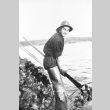
img
Oyster farmer (ddr-densho-15-100)
Norio Mitsuoka is farming oysters. Two long tongs allowed farmers to harvest oysters before the tide was completely out. Each tong had a "rake" at the end, and the farmers would scoop the oysters together between the rakes and haul them up. When full, the load weighed approximately 20 to 30 pounds. Oyster harvesters were paid …
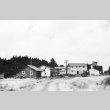
img
New Washington Oyster Company (ddr-densho-15-92)
Oyster companies, such as New Washington, hired many Japanese American workers during the harvesting season.
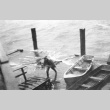
img
Station-house dock (ddr-densho-15-94)
Oyster-farm workers often lived in station houses built on pilings in the bay. Since the only way to access the house was by boat, the houses had floating docks, such as the one shown here.

img
Oyster farmer (ddr-densho-15-101)
"Turk" Fugiya pushes a bateau, a small barge, with a pole. The harvested oysters were loaded on bateaux and moved by towing or by digging and pushing off on long poles.
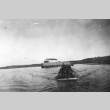
img
Oyster-farm station house (ddr-densho-15-104)
The station house is where oyster farmers lived during the harvesting season. The house was erected on pilings. In the foreground is a bateau, or small barge, that was used to haul oysters.
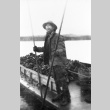
img
Oyster farmer (ddr-densho-15-99)
Hisato "Monks" Yano harvesting oysters with tongs. Tongs were used when the tide was not completely out. Oysters were collected between two rakes, one at the end of each pole. The harvester pushed the poles together, closing the rakes, then pulled up the oysters. One load weighed approximately 20 to 30 pounds.
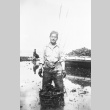
img
Oyster farmer (ddr-densho-15-96)
Mr. Okazaki gathering oysters in bushel baskets. When full, the baskets were emptied onto the bateau in the background. If the flats were muddy, the baskets were pulled to the bateau on wooden slats. The gloves worn by Okazaki were made from canvas covered with rubber. Because of the sharp oyster shells, a pair of gloves …
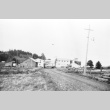
img
New Washington Oyster Company (ddr-densho-39-48)
Japanese Americans were active in oyster farming in the Puget Sound area before World War II.
